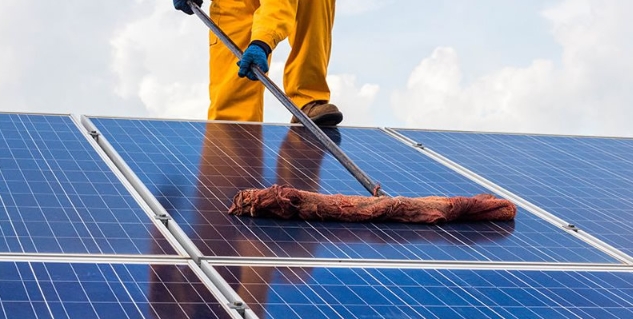
The effectiveness of solar photovoltaic (PV) modules in generating electricity relies heavily on their cleanliness. Regular cleaning ensures maximum sunlight absorption and optimal performance. However, determining the appropriate cleaning frequency depends on various factors, including environmental pollution levels, precipitation patterns, and geographic location.
Here are some recommendations based on different scenarios:
- High Pollution Environment (e.g., Industrial Zones or Desert Areas): Monthly cleaning is recommended due to the elevated risk of dust and particle accumulation, which can significantly impair PV efficiency.
- Moderately Clean Areas (e.g., Rural or Urban Surroundings): Quarterly cleaning should be sufficient to maintain adequate PV performance in areas with moderate pollution levels.
- Humid Regions: Cleaning every 3 to 5 months is advisable, considering the increased likelihood of organic growth and moisture-related contaminants affecting PV surfaces.
- Arid Regions: Monthly cleaning is recommended to mitigate the buildup of dust and sand particles prevalent in dry climates, which can obstruct sunlight absorption.
- General Recommendations: Flexibility in adjusting cleaning frequency based on real-time conditions is essential. A frequency of 1 to 3 days per month is suggested for maintaining cleanliness and maximizing PV output efficiency.
- Special Circumstances: During periods of heavy snowfall or localized sandstorms that significantly impact power generation, additional cleaning sessions may be warranted to restore PV performance.
Annual Cleaning: Some sources advocate for semi-annual or annual cleaning routines, typically conducted in spring and autumn. These targeted cleanings ensure thorough maintenance and optimal performance over time.

It is crucial to employ appropriate cleaning tools and methods to safeguard PV module integrity during cleaning operations. Soft sponges or brushes, along with gentle water rinsing, are recommended to prevent surface damage. Avoiding the use of harsh chemical cleansers is imperative to prevent potential harm to PV surfaces.
In conclusion, determining the optimal cleaning frequency for PV modules involves considering environmental factors and adjusting cleaning routines accordingly. Regular maintenance ensures sustained electricity generation and prolongs the lifespan of PV systems, contributing to their long-term viability as renewable energy sources.

Karstsolar is a professional solar panels manufacturer. We work with you back-to-back to provide high-quality and affordable solar modules. We partner with controller manufacturers, microinverter manufacturers, and bracket manufacturers. We have a strong supply chain group and provide products including solar panels, inverters, etc. Inverters, balcony systems, etc. Please reply to our email and tell us what solar product you need now and try it today: marketing@karstcom.hk

Very interesting topic, thanks for putting up.Money from blog